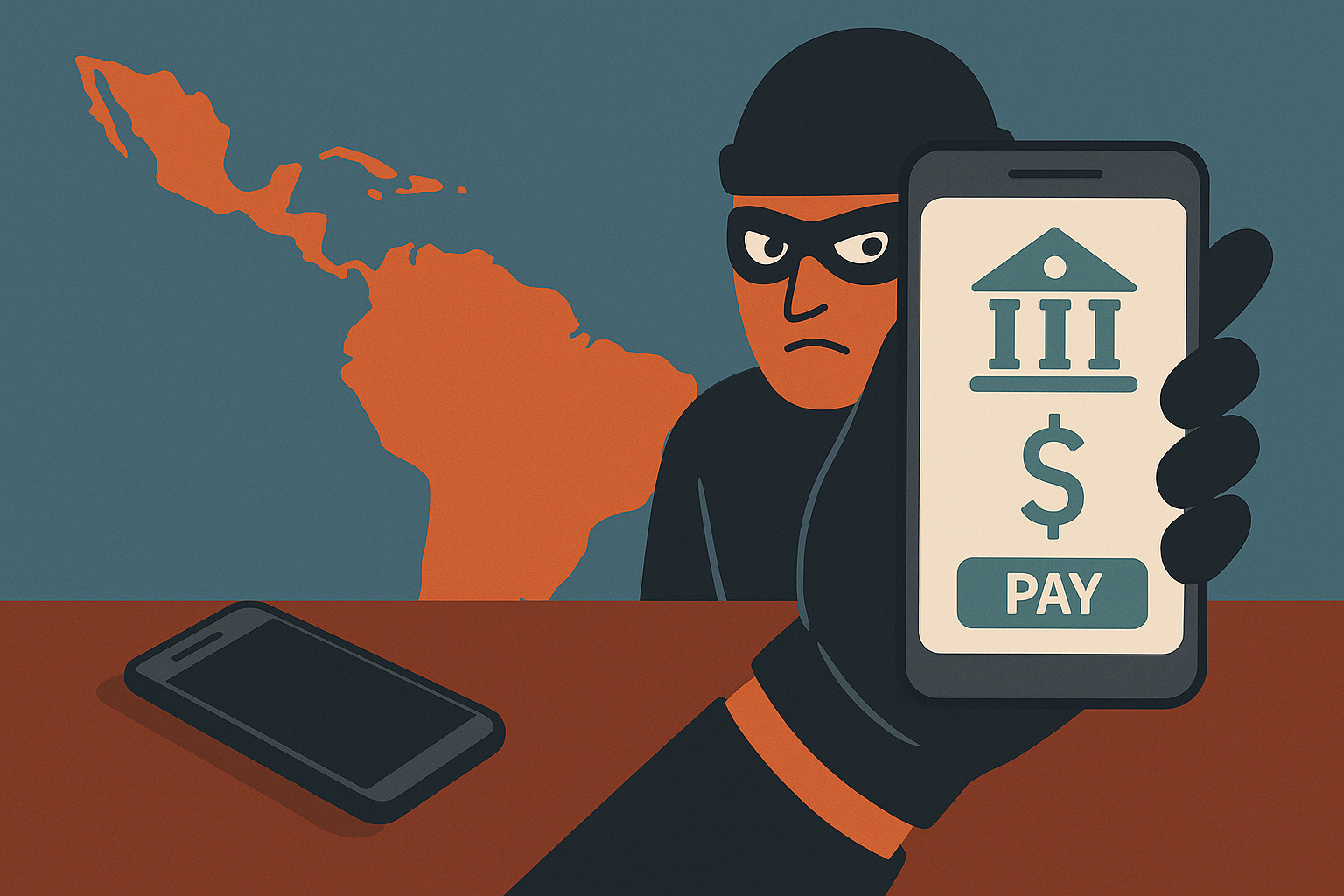Over the last three years, we’ve observed a significant spike in device theft in Latin America. Comparing the first quarter of 2024 with the first quarter of 2025, BioCatch customer data shows most countries in the region experienced a 30% increase in this crime, with Argentina, Colombia, Mexico, and Peru all documenting 50% more cases.
- Peru: More than 1.7 million stolen cell phones were reported in 2023, with a daily average of 4,676 thefts.
- Brazil: Almost one million mobile phones were stolen in 2022, 16% more than during the previous year.
- Mexico: In 2021, there were 8.2 million robberies or assaults on the street or on public transport, and in 57% of those cases, a cell phone was stolen.
- Argentina: Cell phone theft accounts for 27% of all crime.
How criminals execute these thefts varies from case to case, but generally speaking, device-thieves look to take advantage of people using their phones in public places.
Some groups specialize in stealing devices on public roads, quickly handing the stolen phone over to more technically skilled counterparts, who take control of the device, access the victim’s digital banking apps, and start transferring away the victim’s savings. Money mules remain ready to receive the funds and then transfer them on through a network of other mule accounts. Available credit on any digital cards is used up in a matter of minutes.
In other cases, the thief gives the phone to criminals specializing in extortion. These groups demand money in exchange for recovery of the victim’s photos, documents, notes, or the device itself (often in pieces).
The theft of a single device can turn its owner into a victim many times over. Criminals empty accounts, steal identities, apply for online loans, and ransom files. Losses vary drastically, but they start at around $300 and can grow to as much $300,000 per victim. Everything happens rapidly, often limiting the responses available to the victim, their bank, and law enforcement. In most cases, the final step in the stripping of the victim’s device is to deliver it to a criminal gang specializing in selling the physical parts of the device itself.
This makes the right fraud-prevention measures absolutely vital to combatting device-theft. Behavior-based solutions can identity unusual activity in real-time, flagging variations in the connection, transfers to new accounts, and payments to merchants previously unknown to the user. BioCatch combines these elements to create risk assessments that generate real-time alerts, so banks can take action to stop these transactions before the victim of a stolen device loses any money from their bank accounts.
There is not a single countermeasure for this fraud type but instead a series of steps financial institutions (FIs) must take to identify risk. Behavioral solutions allow banks to limit transaction amounts, ask for multiple authentication measures, force users to wait to activate new accounts, and limit operability when the user deviates in their keystroke or mouse activity, touch screen behavior, physical device attributes, and/or more than 3,000 other anonymized behavioral datapoints – all in real time. But telecoms must also complement these bank-based solutions with rapid disabling of the stolen device.
Brazil offers a nice playbook in this regard. Financial institutions, regulators, and telephone companies in the country work together to quickly report and disable stolen devices. Data from BioCatch customers shows a decline in fraud carried out from stolen devices in Brazil, bucking the previously mentioned national trends.
Chile has also implemented changes allowing the disabling of a stolen cell phone within 24 hours of receiving a report of the device’s theft.
Behavioral solutions are essential to combatting fraud carried out from stolen devices, but this type of modus operandi must be addressed in a multi-institutional manner with the participation of financial institutions, telephone companies and regulators.



